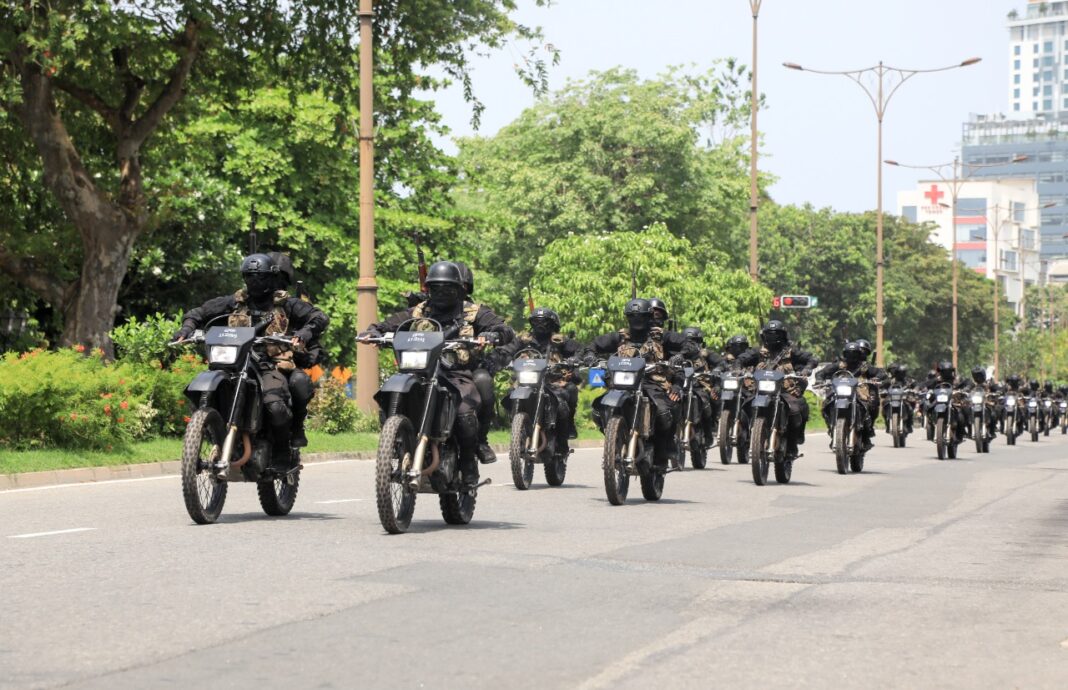The public sector employment has bloated in recent years with respective governments using public funds to create jobs for their loyalists. The current public sector workforce is estimated at over 1.5 million in a total workforce of approximately 8 million. This is a burden that cannot be sustained, especially at a time Government revenue is falling. It is imperative that the Government place a moratorium on State sector recruitment other than into vital areas such as healthcare and education.
In the 2022 budget, the highest allocation was made to the Ministry of Defence. Even while a pandemic was raging in the country allocations for healthcare were reduced.
It is also imperative that the Government address State sector expenditure to ensure that there is a return on the expenditure. In this regard reforms of State-Owned Enterprises (SOEs), curtailing Government expenditure and reducing if not eliminating waste and corruption should be priorities. If the Government of President Wickremesinghe is serious about such action, ‘sound bite’ statements about asking public servants to serve or depart would not suffice. His Government must address the colossal waste and enormous expenditure in defence and take concrete actions for the reform of SoEs.
Sri Lanka today has the world’s 17th largest military. It has not significantly reduced the number of personnel since the end of the war 13 years ago, nor restructured to suit the different realities of a post-conflict, democratic country. There are numerous examples of colossal waste and allegations of corruption regarding the money allocated to the military. The massive defence ministry complex partially constructed at Akuregoda, the selling of the army headquarters’ land at the heart of Colombo, corruption, and numerous allegations during weapons procurement are examples. In the 2022 budget, the highest allocation was made to the Ministry of Defence. Even while a pandemic was raging in the country allocations for healthcare were reduced. This was the case for education too. The direct military allocations for the Sri Lanka Army, Navy and the Air Force, inclusive of both recurrent and capital expenditure, was a staggering Rs. 308 billion or 12.3% of the total estimated Government expenditure of Rs. 2.5 trillion. As a percentage of GDP, Sri Lanka spends nearly 2% on military expenses, an extraordinarily high amount for a country that does not face an existential security threat.
The other area that needs urgent attention is the loss-making SOEs. Loss incurred by SOEs has long been an issue that has worsened fiscal problems in Sri Lanka.
In addition, unlike other countries, Sri Lanka does not have a military industrial sector that produces weapons or ammunition, either for itself or for export. Therefore, much of the capital expenditure incurred by the military is primarily for imports that hardly create any economic activity within the country other than for commissions for a selected few.
The other area that needs urgent attention is the loss-making SOEs. Loss incurred by SOEs has long been an issue that has worsened fiscal problems in Sri Lanka. Prolonged losses by SOEs, partly due to unsound decisions made by policymakers, have resulted in large budget deficits; and despite the need to reform critical SOEs, successive Governments have failed to achieve this in a genuine and sustainable manner. The lumbering giants such as the Ceylon Electricity Board and Ceylon Petroleum Corporation have become a burden on the taxpayer and a drain on the country’s finances. These are institutions that could be restructured, reformed or privatised.
The current economic predicament has forced the Government into action and the impending bailout discussions with the IMF and bilateral donor partners would no doubt raise the issue of public spending. If there is ever a silver lining in this current economic crisis, it is the opportunity to address the unsustainable public sector expenditure. It is hoped that this opportunity will be seized by the present administration.
Original Caption: Addressing public sector expenditure
